Past Plant of the Month: April 2018 - December 2020January 2021 Holly, Winterberry (Ilex verticillata)
You may not be familiar with winterberry as a landscape plant but I’m sure you have seen winterberries in wreaths or floral displays. The American winterberry is somewhat unique because it is a deciduous Like all hollies, shrubs of both sexes must be located within the same general area to ensure fruit production on the female holly. Both plants produce flowers which attract honeybees and other pollinators and one male can pollinate several females. Fortunately winterberry hollies are typically sold by sex since the berries are definitely the star of this plant! - by D. Martin December 2020 Beautyberry, American (Callicarpa americana)
For a stunning native shrub, I recommend American beautyberry (Callicarpa americana), also known as French mulberry and bunchberry. I first saw this shrub in Florida when I was twelve years old. I ran to tell my mother about the beautiful bush with gorgeous purple berries. She did not know what it was but encouraged me to find out. I did not find out until 1988 when living in Georgia I saw the same plant! It was American beautyberry. It is so beautiful in October when it is full of glossy purple berries clustered in balls up and down the arching branches. I had to have one or more!
American beautyberry can be found growing wild in the southeastern states including Tennessee. It can also be purchased from specialty nurseries with pink and white berries as well as the native purple berries. It is easy to grow when given the correct conditions, tolerating clay soil enriched with compost or manure. Beautyberry prefers a light shade, not full sun or dense shade. At the edge of trees or large shrubs is a perfect spot. It also does not tolerate drought conditions so it will require watering during those summer months with little rain. When the leaves look slightly wilted is the time to start watering. If you want a fall show-stopper, this is the plant for you. - by M. Gerber November 2020 Zinnia (Zinnia elegans)
Zinnia plants were always a staple in my grandmother’s East Tennessee garden. That is because these old-fashioned annuals are bright and beautiful, easily grown, can withstand hot summer temps, and are self-seeding from year to year. Zinnias can be planted from seeds which will germinate quickly and can be grown in practically any color or height to fit your garden needs. They also come in various blossom shapes from tiny buttons to large pom-pom type blooms.
October 2020 Milkweed (Asclepias spp.)
Most milkweeds prefer full sun although there are a few woodland species. All are considered perennial and herbaceous (not woody). Each has its own group of insect herbivores that are attracted to it for food. And although you may wonder why you would allow an insect to eat one of your plants (sometimes to the ground), rest assured that the milkweed has many defenses and coping behaviors of its own and will grow back even more hardy than before. The flowers are unique and critically important for the diversity of pollinators they support. Once established, milkweed will continue to thrive year after year in your garden and generally are easy to transplant or to propagate. Collect the seed when it is ready and then plant it right away as most milkweed seed needs to go through a winter cold to germinate. Here are some milkweeds native to the Southeast you might consider for your garden habitat:
**A note about Tropical Milkweed, Asclepias curassavica. This is a beautiful milkweed that is not native to our area. It is easy to grow but there are some potential problems for monarchs associated with this plant. If you want to grow this milkweed in your garden, plan to cut it back when monarchs are migrating. You can collect seeds to scatter again in the spring. If the winter is mild, the roots will survive and send up new growth for the following year. Although this is a beautiful milkweed species, please consider planting other, native species in your milkweed garden. - by W. DeWaard September 2020 Pentas / Egyptian Star Cluster (
Containers are one of the pleasures of the summer garden, and choosing their contents is a lot of fun. There are many beautiful annuals to choose, but Pentas is one that I make sure to include every summer. They come in many colors from white through pinks to ruby red and purple. They grow slowly in early summer, but from midsummer to fall they produce a lot of flowers after some annuals have begun to decline. There are now different sizes--some stay no taller than 18 inches and others may grow to 30 inches. Of course, you could also plant them in a sunny bed, but they are also happy in part shade.
Pentas plants won’t be included in the first selections the garden centers offer. They develop slowly, so look for them in late April or early May. If you are a butterfly lover, remember to seek them out. You won’t be disappointed. - by E. Johnson August 2020 Yarrow (Achillea millefolium)
Yarrow is a versatile plant, an herb that is good as a cut flower, and attracts butterflies.
Yarrow prefers loamy, sandy, well-drained soil. It is heat and drought tolerant. Clumps should be divided every 2-3 years to maintain vitality, but it is otherwise low-maintenance. - by B. Hornyak July 2020 Abelia, glossy (Abelia x grandiflora)
The Abelia we know and love is glossy abelia (Abelia x grandiflora). Chances are, if you grew up in the South you've seen this airy shrub all your life, perhaps without a proper introduction. Glossy abelia is ubiquitous in established neighborhoods from Virginia to Texas and, in my opinion, too often overlooked and under-appreciated. Abelia is one of the loveliest, easiest plants to grow. There are at least 30 cultivars, for sun or part shade. New, smaller cultivars are in vogue with commercial landscapers, who tend to like a neat, mounded habit and low maintenance. These two are on the market and readily available: ‘Kaleidoscope’ with its light green-and-white variegated leaves and white flowers; ‘Rose Creek’ which is smaller (about 2-3’ high), with very small leaves and a pinker blossom.
Abelia is easy maintenance: low water once established, little or no fertilizer, and no serious disease or pest problems. It is a draw for butterflies and, even better, a food source by their larvae. If you’d like a delicate, pretty something wafting by your window, plant glossy abelia just outside, next to the house. It wafts wonderfully - by J. Worley June 2020 Beardtongue (Penstemon digitalis)
This flowering perennial is a North American native with over 250 species. Most species are indigenous to the desert southwest and Mexico although a few originate in the East. Penstemon digitalis or foxglove penstemon is an Eastern cultivar that thrives in the heat and humidity of the South. A great all-season perennial, it keeps a neat mat of attractive foliage all winter long. No cold weather hibernation for this one!
May 2020 Fothergilla, Dwarf (Fothergilla gardenii)
Fothergilla is an exceptional, often overlooked shrub with a darned ugly name. But what’s in a name? Also known as witch alder (no improvement), this shrub is a year-round winner! Give this hardy plant full sun to partial shade plus moderate moisture and enjoy. Fothergilla is easily grown in average, well-drained, acidic soil and is essentially maintenance free. Truly a shrub for all seasons! In spring, before the leaves emerge, bottlebrush spikes of ivory white flowers cover the plant. The bloom has a delicious anise and honey-like scent and buzzes with bumble and honey bees. Beneficial wasps and butterflies are also frequent pollinators. Fall brings another dimension to this plant with leaves that turn iridescent shades of orange, yellow and red. Stunning! And you thought burning bush was a fall thriller.
Fothergilla requires no pruning if you are careful to select the right species, and looks best in mass plantings. F. major can grow 6’ to 12’ in height, while F. gardenii is a dwarf variety growing to only 2’ to 4’. Fothergilla looks best in its natural growth habit and makes a great companion to azaleas, rhododendron and other acid-loving woodland plants. ‘Blue Shadow’ is a favorite variety that has powdery blue leaves that stand out all summer long. No maintenance, no pests, no diseases, lots of pollinators and year- round enjoyment - it just doesn’t get any better than Fothergilla. - by J. Dean April 2020 Blackberry (Rubus ‘Triple Crown’)
I’ve grown red raspberries (successfully), black raspberries (somewhat successfully), purple raspberries (not so successfully), as well as some other varieties of thorny, scratchy cane berries. One reason I’ve done so is that I love plants that grow, bloom, and fruit, then do it all over again year after year! These perennials are a gardener’s dream...except for the thorny, scratchy part. But, just like on your smartphone, there’s an app for that. Thanks to the Agricultural Research Service’s Fruit Laboratory in Beltsville, MD, a mighty fine thornless blackberry is available that goes by the name ‘Triple Crown’. So says the lab: “The berry is named for its three crowning attributes - flavor, productivity, and vigor.” I can confirm they got it right. For my blackberries, I set up a row of “T” posts spaced about 10 feet apart. Then I run a strand of smooth wire (I use recycled electric fence wire) about 2 feet off the ground and another strand near the top of the “T” posts, about 4 feet up. As the canes grow, I clip them to the wires with round plastic tomato clips (I use these clips for tomatoes, cucumbers and other things, too - buy in bulk!). That helps contain the horizontal spread of the canes and the width of the each row.
As the canes grow during the season, if you don’t prune them off, some long ones will bend over and touch the ground. Where they do, these canes will start to develop roots. If a cane roots within your row bed, you can prune it and let a new plant develop there. If not, you can prune it, carefully dig up the root with surrounding soil and transplant it in your row or use it to extend your row. Propagating blackberries is easy-peasy. I don’t use any pesticides, I’ve never applied fertilizer (organic or otherwise), and my blackberries have been producing for several years now. They do like good sun and don’t like wet feet, so I’ve read, but my row is not in a raised or mounded bed. I’ve never watered them, and they are producing fine this year after a terribly dry year in 2016. Of course, the pollinators love the blossoms! Unfortunately, beetles (both Japanese and June bugs) love the berries. Thankfully, the “productivity and vigor” of Triple Crown blackberries is sufficient to meet my needs and those of my unwanted neighbors. - by D. Leath March 2020 Blueberry, Rabbiteye (Vaccinium ashei)
The rabbiteye blueberry is an easy to grow, edible landscape plant suitable for any full/part-sun part of your yard. Twisted, peeling stems provide interest in winter; profuse pink blossoms provide nectar for native bees, butterflies and other insects in spring; savory blue fruit is enjoyed by wildlife, humans and my dogs (!) in the early summer; and the long-lasting red foliage provides color in fall.
Rabbiteye blueberries are native to the Southeast United States and are fairly tolerant of neglect. They do best when grown in acidic soil (pH of 4.0 to 5.5). If your soil pH gets too high the bush will develop yellowing leaves indicative of iron chlorosis. Test your pH and add a soil acidifier as required. Blueberries also like rich, medium to wet, well-drained soil but I don’t typically water my established plants unless they get really dry and my berries need some pre-picking plumping. Adequate watering is recommended during the first year or two after planting for healthy root development. Although blueberries are self-fertile, cross-pollination produces the best fruit crop (larger berries and larger yields) so plant two and share with the birds. - by D. Martin February 2020 Rosemary ( Rosmarinus officinalis)
The rosemary plant is a wonderful evergreen addition to your herb garden. Its piney scent welcomes you whenever you pass by it to cut stems for cooking. Rosemary wants full sun and dry feet. It is reliably perennial in our area, forming plant masses up to three feet tall. Rosemary stems are covered in tiny blue flowers in the spring, which are a powerful magnet to all sorts of pollinators. No special care is needed for rosemary other than establishing it in full sun and well- drained soil. Rosemary is easily propagated by putting cuttings in water and then planting out when roots form, or by weighting down a stem so it is touching the soil. Roots will form where the contact is made.
January 2020 Dogwood, Silky (Cornus amomum)
Have you ever had a plant that you just had no luck with? That’s the case for us with dogwood trees over three states! Once we became Tennesseans, we wanted some type of dogwood in our yard. We were unfamiliar with the silky dogwood shrub until it was offered during the annual plant sale by the Blount County Extension Office. Since we had a new landscape to fill, we bought three of the bare root plants. They have grown quickly and, one year later, despite living through a severe drought, are about 4’ x 5’. They flowered a little this spring, and we hope to see more blooms each year as they mature. We’re using them as a green backdrop to our perennial bed; they can also be used as a hedge, or for erosion control.
December 2019 Blanket Flower or Indian Blanket (Gaillardia pulchella)
To accommodate the hot and dry summer conditions of East Tennessee, it may become necessary to use the hardy and resilient qualities of native flowers in order to add color and beauty to your garden. Gaillardia pulchella, commonly known as blanket flower, is the most widespread of 12 species of Gaillardia native to the United States. The common name may be attributed to the habit of Gaillardia species in the wild to form colonies that blanket the ground.
November 2019 Lantana (Lantana camara)
Lantana loves summer sun. I have a shade garden but I love Lantana, so I use it in pots placed in a few precious sun spots. It’s a happy container plant, but it absolutely thrives in sunny beds and can be spectacular planted in mass. Lantana is an all-time favorite of butterflies and hummingbirds. Its flowers are some of the brightest in the garden. Cheerful, heat- resistant, easy to grow, and flowering all summer long, Lantana has many cultivars, blooming in solid colors and bi- or tri-color combinations. It may be upright, mounded, or trailing, so be sure and check the nursery tag. I try different ones every year. My favorite (so far) is ‘Dallas Red’. It grows upright, as much as six feet high (in part sun!) and blooms solid red, then each blossom cluster re- blooms in yellow and pink.
Well, one could ask it to live through the winter, which it has done here but, more often, doesn't. The cultivar ‘Miss Huff’ is your best bet for wintering over, and chances are improved if it's in the ground, not a container, with a heap of mulch on top of it. Cut the plant stem a few inches from the ground in late fall, and do not bother the root. Next spring it will look well and truly dead, but it may surprise you with green shoots after you have given up on it. Farther south, it winters over routinely and can become invasive, but that is not a problem in East Tennessee. One cautionary note: the fruit (clusters of BB-size green beads) can make you, your child, or your dog sick, if ingested. I deadhead the flagging blossoms for aesthetic reasons, before the green BBs form. It’s not necessary, and if you don't, just remember: Please don’t eat the Lantana. - by J. Worley October 2019 Sunflower, Willow Leaf (Helianthus salicifolius)
Sunflowers are certainly a gift of summer. They remind me of sultry afternoons with the promise of autumn yet to come. Common sunflowers are the ones we are most familiar with. They stand tall and proud on long, straight stems with their magnificent faces lifted towards their namesake and beautiful blue summer skies. There are numerous varieties of sunflower and each is worthy of a spot in your garden; however, one particular sunflower could easily become your favorite.
The graceful willow leaf sunflower requires very little maintenance, is deer-resistant, has no serious disease or insect problems, but can be susceptible to rust or powdery mildew as most sunflowers are. These showy flowers attract butterflies and if the seed heads remain on the plant, they will add a rich source of food for birds in winter. If you are looking to add a “pop of color” to your end-of-summer fall garden, you won’t be disappointed with willow leaf sunflower. - by D. Talbot September 2019 Sage (Salvia spp.)
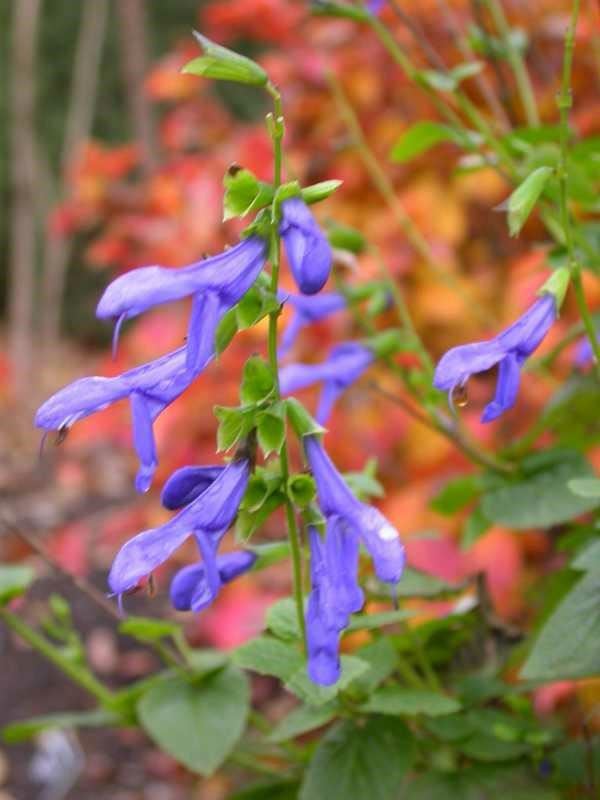 plants are the straight species, but the most popular cultivar is ‘Black and Blue’ which is available at most any garden center. It is supposed to be questionably hardy here, but it has bloomed in my garden for at least ten years and provides nectar for the hummingbirds from mid-summer into autumn plants are the straight species, but the most popular cultivar is ‘Black and Blue’ which is available at most any garden center. It is supposed to be questionably hardy here, but it has bloomed in my garden for at least ten years and provides nectar for the hummingbirds from mid-summer into autumn
- by E. Johnson August 2019 Sedum 'Stonecrop' (Sedum spp.)
Hylotelephium is a genus of over 30 species of drought-tolerant perennials. Many species and hybrids were formerly placed in the genus Sedum a name still in common use. This is a hardy plant that is tolerant of dry, shallow or rocky soil. It will also tolerate light shade but will produce a floppy, leggy look. Stonecrop performs well in summer and fall attracting bees and butterflies to its mounds of pink or bi-color flowers and providing excellent fall color in the garden.
Propagate by dividing in spring or by cuttings in summer. In late fall, I like to leave the dried up flower heads for winter garden interest. - by L. Torbett July 2019 Petunias (Petunia spp.)
There is probably not anyone reading this who doesn’t recognize petunias! But did you know that scientific studies of this popular plant have revealed that it knows when to release scent to attract pollinators based upon circadian rhythms? In addition, some petunias use ultraviolet light to attract pollinators - bees prefer P. inflata, which is purple, and hummingbirds go for the red of P. exserta. These annual flowers are frequently seen in containers, window boxes, and hanging baskets, although they can also be planted directly into the garden. Bees may be attracted to them, but they won’t hang around long because petunias contain little pollen or nectar. Butterflies are attracted to their red, yellow and pink flowers, and hummingbirds are drawn by their trumpet shape.
Spreading petunias, such as ‘Wave’, ‘Supertunia’, ‘Cascadia’, and ‘Surfinia’ do not require deadheading, but may be pinched back a few inches at mid-season when they start to get ‘leggy’ to encourage more blooms. Water once a week in the ground; more often in containers. Don’t let these plants dry out between waterings. They can spread 2’ to 4.’ - by B. Hornyak June 2019 Tickseed/Coreopsis (Coreopsis spp.)
Coreopsis is a genus that botanists have been working hard to hybridize into a rainbow of colors. Hardy in Zones 3-8 and native to North America, they are grown for their showy blooms and used regularly in modern gardens. Coreopsis has showy daisy-like flower heads which are lifted above the foliage on long, wiry stems. Generally, the foliage is a nice green with cut or fern-like leaves that move with the breeze. Drought-tolerant and deer resistant, it is considered by many gardeners to be one of the best native wildflowers in the garden. Preferred Conditions: The Coreopsis is very easy to grow and will tolerate any soil type except waterlogged soil and requires little watering once established.
Uses in the Garden: The drought-tolerant nature of the Coreopsis makes it a great plant for container gardens, xeriscaping, or near the road or mailbox where it won’t get watered every day. It excels in cottage and native prairie gardens or informal borders. However, some cultivars stay compact enough to make a great mass planting in a formal garden bed as well. Coreopsis species are used as nectar and pollen for insects. The species is known to specifically provide food to caterpillars and these sunny, summer blooming daisy-like flowers attract butterflies, bees, hover flies and wasps, to name a few. - by E. Harris May 2019 Tulip Tree/Tulip Poplar (Liriodendron tulipifera)
When I was growing up, our favorite tree was a big tree in the front yard with a rope swing on it. It was a tulip poplar (tulip tree, yellow poplar, Lireodendron tulipiera). This fast- growing deciduous hardwood is one of the first trees to come into open, disturbed areas of the forest. Because of its faster growth, it is an ideal candidate as a shade producer for an open lot. It generally has one straight trunk and high branches. Because of its height, 70’ to 100’, it should not be planted too close to structures. In May, it is crowned with yellow tulip- shaped blossoms sporting orange splotches at their base. It is known as a favorite of honeybees and also attracts butterflies.
April 2019 Violet, Common ( Viola sororia )
I use common violets in my woodland garden as a ground cover. It’s a care-free native perennial plant that tolerates a wide range of conditions. In full sun the leaves turn yellow-green in summer and may go dormant in drought. But every spring it will return with delicate violet-blue flowers in April that will last through early May. Violets do best in part shade, and will reach a height of 8 inches with 3/4” inch blooms in moist, rich loamy or clay soil, spreading readily to fill a space if left undisturbed. A light fertilizer application in spring and occasional weeding is helpful. Anything more is probably harmful. Violets should not have their dead leaves raked out. Why? It’s not about the plants; it’s for the butterflies!!!
March 2019 Magnolia, Southern (Magnolia grandiflora)
Maybe I have been reading too many romance novels but for me when I think of the Southern magnolia, I think of stately homes with large trees shading sweeping lawns, the sultry air redolent with the lemony scent of their bold white flowers. Appropriately, Louisiana and Mississippi have adopted this native tree as the state flower and state tree respectively.
This is a magnificently large tree that needs space to spread out. The dense shade and shallow roots will make it impossible to grow grass underneath. Do not plant near walks or driveways as the roots will lift and crack the pavement. Note also that this tree is evergreen and will drop leaves year round. - by L. Torbett February 2019 Leatherflower, Ocoee (Clematis viorna L.)
Somewhat understated in the garden, this delicate yet whimsical Southeast Clematis species of the buttercup family is a well behaved (roughly 6 feet or so) deciduous perennial vine. Also known as vasevine or leather vasevine, this native Clematis is well suited for gracing lampposts, fences, arbors, trellises, or found intertwined through shrubs. The small 1 inch, bell shaped blossoms of magenta leathery sepals, contrasted by a rolled back creamy colored underside begins to welcome pollinators of bees and hummingbirds in late spring. Though the bloom season isn’t long-lived for this species (into early summer), this vine works nicely as a vertical element to under plantings of perennials and shrubs. As the flowers fade, a shiny pale green colored seed head (achene) of multiple strands begins to develop, becoming fuzzy and curling under before turning brown in the fall. Clematis viorna blooms on new wood so cut back the old vines to about 6 inches in late winter before the new flush of green appears in spring.
So if you are contemplating a native vine to welcome local pollinators, consider leather flower, Clematis viorna, as a food source for our local pollinators with its graceful nodding bell flowers and amusing seed heads- by C. Ferrone January 2019 Holly, Winterberry (Ilex verticillata)
You may not be familiar with winterberry as a landscape plant but I’m sure you have seen winterberries in wreaths or floral displays. The American winterberry is somewhat unique because it is a deciduous holly. Its fall color is unimpressive but once it drops its leaves a fully-fruited winterberry holly is among the most spectacular of all berried bushes. Fruits can be so numerous and so startlingly Like all hollies, shrubs of both sexes must be located within the same general area to ensure fruit production on the female holly. Both plants produce flowers which attract honeybees and other pollinators and one male can pollinate several females. Fortunately winterberry hollies are typically sold by sex since the berries are definitely the star of this plant! - by D. Martin December 2018 Holly, American (Ilex opaca)
Holly sprigs are widely known as a symbol of Christmas cheer. But holly as a tree offers much, much more. American hollies provide year-round interest, provide cover and food for birds, and pollen for bees and other insects. The American holly is easily identified because it is the only native U.S. holly with spiny green leaves and bright red berries. The American holly tree has been popular since the beginning of American history, having provided Native Americans with wood for many different applications and berries that were used for buttons and bartering. It was said to be a favorite of George Washington, and more than a dozen hollies he planted are still alive today.
Hollies can be pruned to control height. December is the best time, when the plant is dormant, but it can be lightly pruned throughout the year. Fertilize only once a year with a slow-release granular fertilizer for acid-loving plants. Healthy plants have few problems but watch for leaf miner, scale, leaf spot or mildew that will attack stressed plants. - by D. Martin November 2018 Clematis (Clematis spp.)
As a "newly-minted" Master Gardener, I am humbled by how little I know about successful gardening. My husband has been the gardener in our family, and I have enjoyed the results of his hard work and dedication - as his gardener's assistant. I love clematis and am always thrilled by their lovely blooms! Growing clematis in our yard is one of the projects I have personally pursued, acquiring five different plants, based on how much I liked the picture on the tag - not a good method, as I have learned. Two bloom very nicely in the spring then dry up and look shabby, two are barely surviving, and the fifth has nice foliage but has never bloomed. Clearly a new strategy is required!
Understanding that all clematis need sufficient sun, plenty of water, well-drained soil, "cool feet" (mulch and shade), and appropriate fertilization, I will choose my plants based on bloom time, color, fragrance, attractiveness to pollinators, and evergreen foliage. My plan is to acquire two Clemantis armandii (evergreen and fragrant) and three other cultivars, in different colors. I will plant new vines in the early fall as recommended. I anticipate it will take two full growing seasons to implement the plan. With luck, by spring of 2019, our yard will be overflowing with boisterous, colorful, pollinator-pleasing Clematis! – by R. Saczawa October 2018Beautyberry, American (Callicarpa americana)
For a stunning native shrub, I recommend American beautyberry (Callicarpa americana), also known as French mulberry and bunchberry. I first saw this shrub in Florida when I was twelve years old. I ran to tell my mother about the beautiful bush with gorgeous purple berries. She did not know what it was but encouraged me to find out. I did not find out until 1988 when living in Georgia I saw the same plant! It was American beautyberry. It is so beautiful in October when it is full of glossy purple berries clustered in balls up and down the arching branches. I had to have one or more!
American beautyberry can be found growing wild in the southeastern states including Tennessee. It can also be purchased from specialty nurseries with pink and white berries as well as the native purple berries. It is easy to grow when given the correct conditions, tolerating clay soil enriched with compost or manure. Beautyberry prefers a light shade, not full sun or dense shade. At the edge of trees or large shrubs is a perfect spot. It also does not tolerate drought conditions so it will require watering during those summer months with little rain. When the leaves look slightly wilted is the time to start watering. If you want a fall show-stopper, this is the plant for you! - by M. Gerber September 2018
Most milkweeds prefer full sun although there are a few woodland species. All are considered perennial and herbaceous (not woody). Each has its own group of insect herbivores that are attracted to it for food. And although you may wonder why you would allow an insect to eat one of your plants (sometimes to the ground), rest assured that the milkweed has many defenses and coping behaviors of its own and will grow back even more hardy than before. The flowers are unique and critically important for the diversity of pollinators they support. Once established, milkweed will continue to thrive year after year in your garden and generally are easy to transplant or to propagate. Collect the seed when it is ready and then plant it right away as most milkweed seed needs to go through a winter cold to germinate. Here are some milkweeds native to the Southeast you might consider for your garden habitat:
**A note about Tropical Milkweed, Asclepias curassavica. This is a beautiful milkweed that is not native to our area. It is easy to grow but there are some potential problems for monarchs associated with this plant. If you want to grow this milkweed in your garden, plan to cut it back when monarchs are migrating. You can collect seeds to scatter again in the spring. If the winter is mild, the roots will survive and send up new growth for the following year. Although this is a beautiful milkweed species, please consider planting other, native species in your milkweed garden. - by W. DeWaard August 2018
Zinnia plants were always a staple in my grandmother’s East Tennessee garden. That is because these old-fashioned annuals are bright and beautiful, easily grown, can withstand hot summer temps, and are self-seeding from year to year. Zinnias can be planted from seeds which will germinate quickly and can be grown in practically any color or height to fit your garden needs. They also come in various blossom shapes from tiny buttons to large pom-pom type blooms. Zinnias are low maintenance, requiring only full sun and well-drained soil. They are very drought tolerant but if you water them, do not wet the leaves as they have a tendency to get powdery mildew, especially later in the season. Zinnias will bloom repeatedly all summer and make excellent cutting flowers for bouquets. In fact, they respond to frequent cutting by producing even more brilliant flowers. The bright yellows, oranges, reds, pinks, and purples of Zinnias shout “summer” and will light up every garden. - by C. Satterfield July 2018
One plant that has been in my gardens for decades is a purple-pink daisy aptly called purple coneflower (scientific name Echinacea). In recent years there has been a veritable explosion of new, vibrant colors and unusual flower forms. The new varieties have become quite different from the original dry plains plants, popular during the 1970's interest in medicinal plants. While many of the new types are striking, others look somewhat deformed. A few of the double-decker versions resemble the effects of eriophyid mite infection or aster yellow. Many are sterile and attract few birds or insect pollinators. At a time of increasing concern for many of our pollinators these mostly sterile flowers are not helping support native insect life. Natives and nativars (cultivated native plants) are much better at supporting insects and bees. My coneflower favorite, and a true native to this state, is the Tennessee coneflower (Echinacea tennesseensis) sometimes sold as a hybrid called 'Rocky Top'. The plants may not be as showy and robust appearing as some coneflowers but they always attract bees, butterflies or moths, especially if kept deadheaded. Echinacea that can be grown from seed will attract a wide variety of pollinating insects. Two other stellar examples are ‘Pow Wow Berry’ and ‘Cheyenne Spirit’. All of the species of coneflower do best in full sun, and can be drought tolerant when established. They don't do well when over watered but are generally tough as nails, a trait appreciated by beginners as well as old hands. - by R. Lieber June 2018
When most people think of bleeding hearts they think of Dicentra spectabilis, the plant I have called “English bleeding heart.” But in researching, this article I found that they are actually Asians like so many plants that were taken from China to England and then passed on to America. The version that is our own American bleeding heart is Dicentra eximia, considered a wild flower here in Tennessee. Ours may be somewhat less showy, but it is a completely dependable plant, blooming all summer. In my present garden, a white one was planted about five years ago and there is now a community of its seedlings, most of which are the original pink color. Named because their blossoms resemble a dangling heart, they are a sure thing for succeeding in a shady or dappled shade bed. In her book, Gardening with the Native Plants of Tennessee, Margie Hunter described their seed pods as “looking like a tiny banana,” and they burst open to produce many seeds and a lot of seedlings. And just about any time I visit them there will be bees checking them out. Highly recommended! - by E. Johnson May 2018
I have always loved the native azaleas and have several in my garden including two that are flame azaleas. These are the matchless wild azaleas that live in our East Tennessee mountains and grassy balds. There is nothing more beautiful than a native azalea in bloom. The colors can be used to create a stunning specimen in a flower bed, and they bloom later when the usual evergreen azaleas are through blooming. Avoid placing them among plants that require lime, because they need an acid soil, no more than 6.5 pH. I have observed hummingbirds coming to my azaleas. Plants can be purchased when small and grown in a container until large enough to transplant into a flower bed. - by E. Johnson April 2018
In most of East Tennessee, C. florida and her many cultivars reign supreme in spring, with shiny, new leaves and abundant blossoms in March and April. This native dogwood is drought tolerant once established, tolerates clay soils, and is usually free of disease. It will grow in part shade or full sun, with more blossoms in relation to amount of sun. Mulch to retain moisture. The “blossoms” are actually colored bracts and the true blossom is a cluster located at the center of the bracts. In autumn the foliage is a stunning red. Up to 36 species of critters are attracted to the red winter fruit! The gardener may select from white, pink, and red (really a deep rose) for color. White makes a spectacular backdrop or specimen when planted with evergreens, and echoes the natural woodland variety bringing a bit of the Tennessee countryside to your garden. White avoids color clash with any redbuds planted nearby and seems to thrive better, grow faster, and have greater disease resistance than the pinks and reds. My favorite white variety is ‘Cherokee Princess’. Anthracnose fungal disease has been a serious problem with forest dogwoods. Avoiding stress on young trees and planting where air circulation is good will help the tree's resistance. Two notable cultivars, ‘Appalachian Spring’ and ‘Appalachian Snow’, were developed specifically to resist anthracnose. Fungicide application in spring following a year of severe infection will often remedy the problem in other varieties. - by L. Smalley |


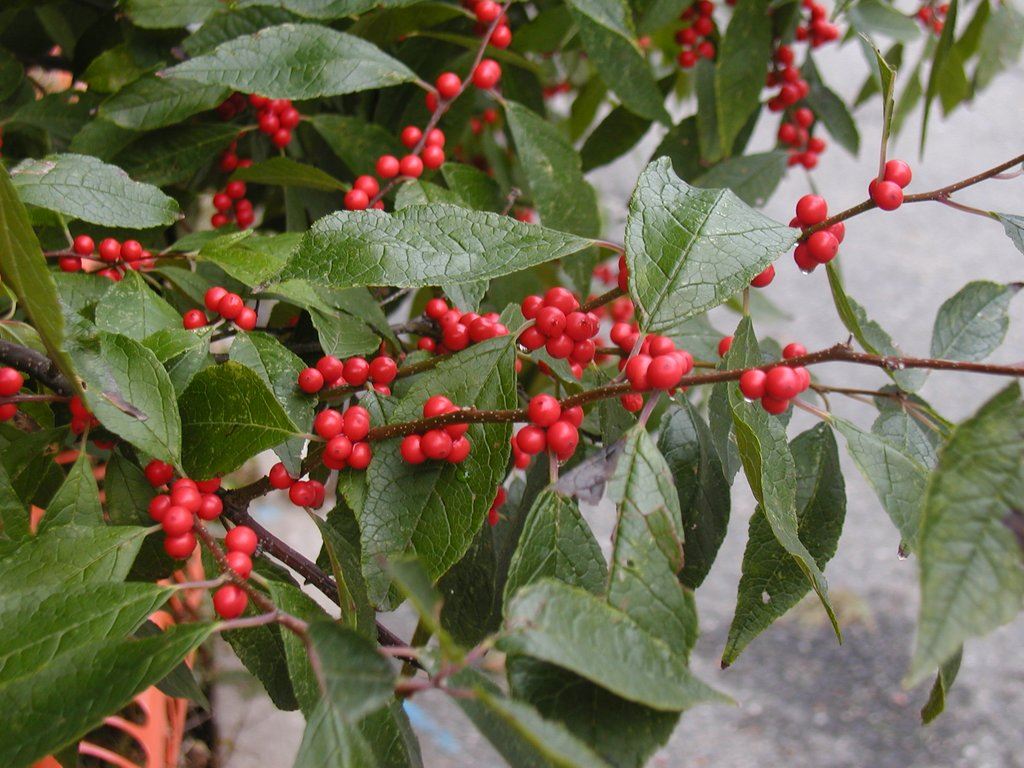
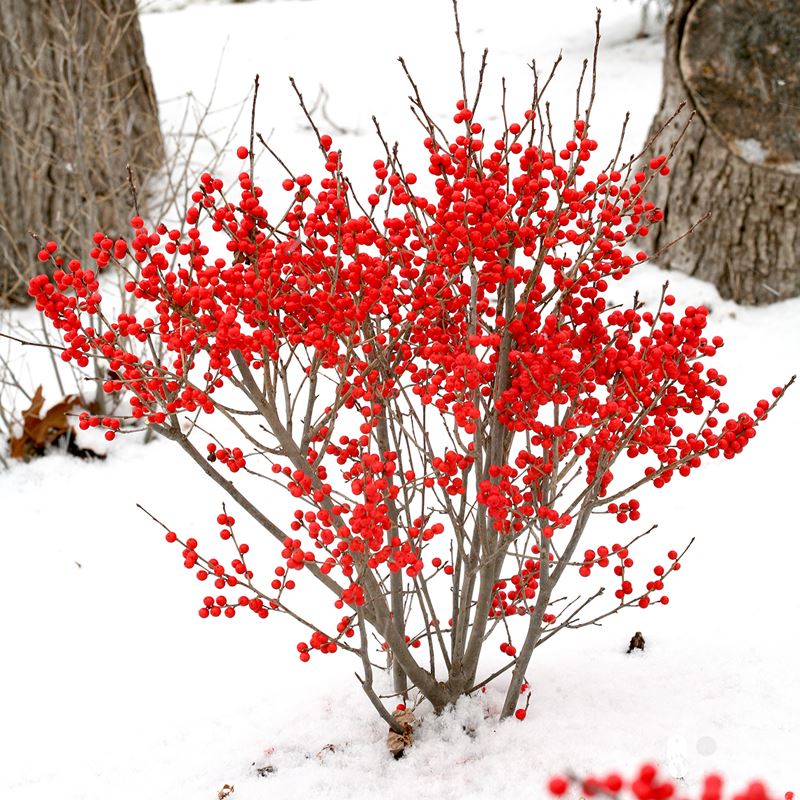 holly. Its fall color is unimpressive but once it drops its leaves a fully-fruited winterberry holly is among the most spectacular of all berried bushes. Fruits can be so numerous and so startlingly bright that the twigs are hardly visible! The attractive bright red fruit of winterberry is eaten by small mammals and several species of birds. My winterberries typically attract wood thrushes and bluebirds so I have to be quick to cut what I need for wreaths!
holly. Its fall color is unimpressive but once it drops its leaves a fully-fruited winterberry holly is among the most spectacular of all berried bushes. Fruits can be so numerous and so startlingly bright that the twigs are hardly visible! The attractive bright red fruit of winterberry is eaten by small mammals and several species of birds. My winterberries typically attract wood thrushes and bluebirds so I have to be quick to cut what I need for wreaths!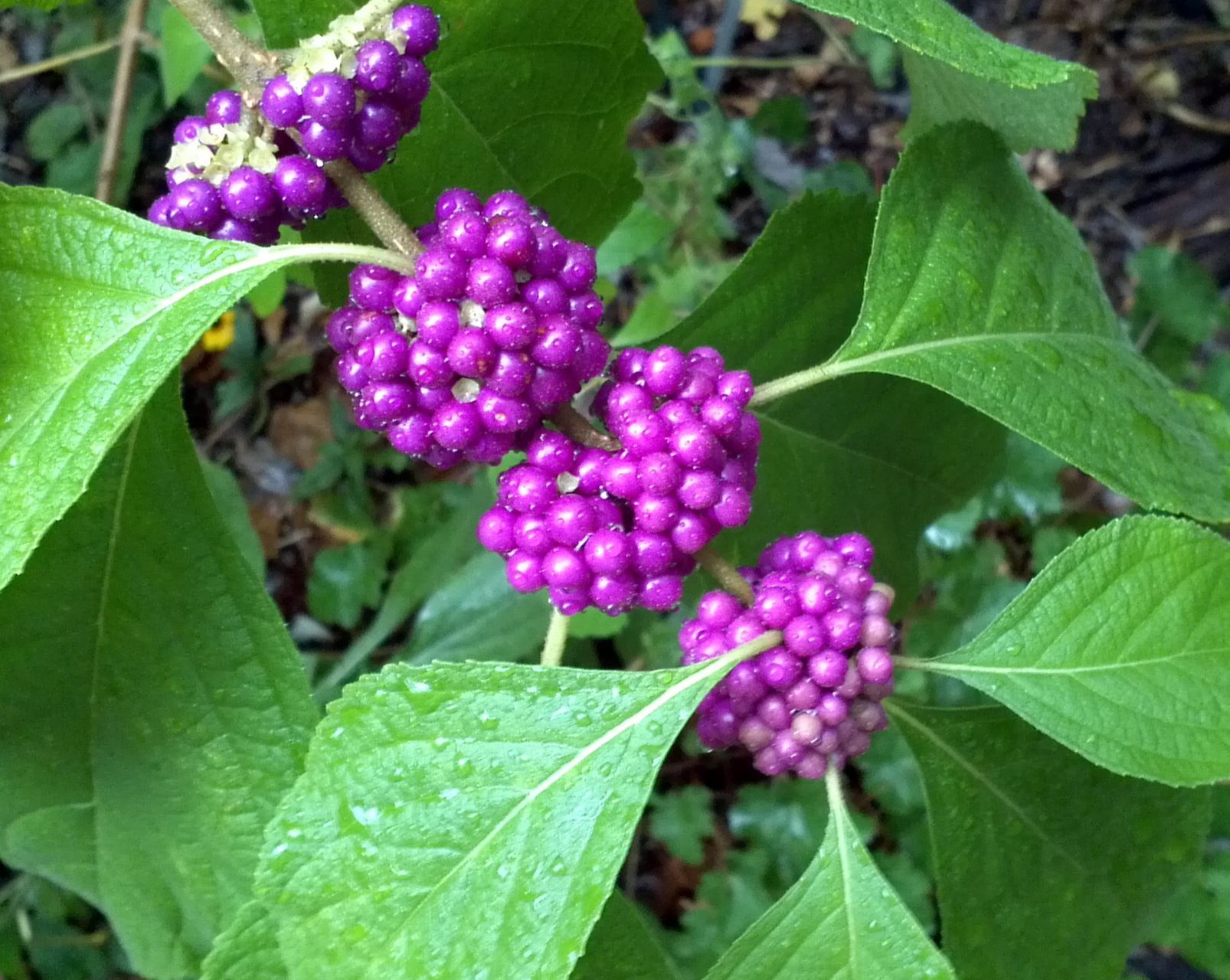
 This plant is a native deciduous shrub of the Southeast United States. Native Americans used the dried roots and leaves for tea to combat illnesses such as rheumatism, fever and even malaria! Pioneers used the green leaves as a bug repellant for their horses and mules. They even rubbed it on themselves to repel biting bugs. It is food to over forty species of birds as well as raccoon, fox, opossum and white- tailed deer. Beautyberry has no real value as a pollinator as the flowers do not produce much nectar. The shrub is rather nondescript during the summer with oval, serrated leaves about 6-9 inches long and gray bark on old wood. It grows to 6 feet tall and 5 feet wide, but can be cut back to twelve inches in the winter to keep it 3’ to 4’ in height.
This plant is a native deciduous shrub of the Southeast United States. Native Americans used the dried roots and leaves for tea to combat illnesses such as rheumatism, fever and even malaria! Pioneers used the green leaves as a bug repellant for their horses and mules. They even rubbed it on themselves to repel biting bugs. It is food to over forty species of birds as well as raccoon, fox, opossum and white- tailed deer. Beautyberry has no real value as a pollinator as the flowers do not produce much nectar. The shrub is rather nondescript during the summer with oval, serrated leaves about 6-9 inches long and gray bark on old wood. It grows to 6 feet tall and 5 feet wide, but can be cut back to twelve inches in the winter to keep it 3’ to 4’ in height.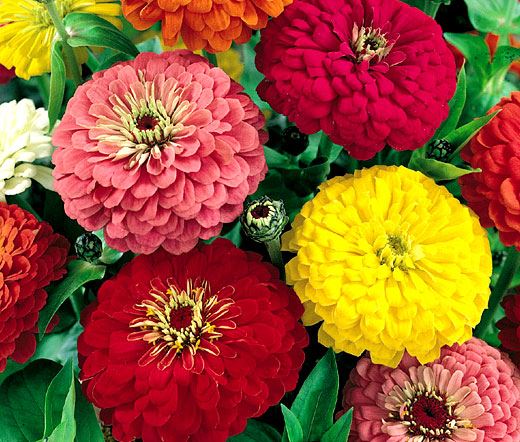
 Zinnias are low maintenance, requiring only full sun and well-drained soil. They are very drought tolerant but if you water them, do not wet the leaves as they have a tendency to get powdery mildew, especially later in the season. Zinnias will bloom repeatedly all summer and make excellent cutting flowers for bouquets. In fact, they respond to frequent cutting by producing even more brilliant flowers. The bright yellows, oranges, reds, pinks, and purples of Zinnias shout “summer” and will light up every garden. - by C. Satterfield
Zinnias are low maintenance, requiring only full sun and well-drained soil. They are very drought tolerant but if you water them, do not wet the leaves as they have a tendency to get powdery mildew, especially later in the season. Zinnias will bloom repeatedly all summer and make excellent cutting flowers for bouquets. In fact, they respond to frequent cutting by producing even more brilliant flowers. The bright yellows, oranges, reds, pinks, and purples of Zinnias shout “summer” and will light up every garden. - by C. Satterfield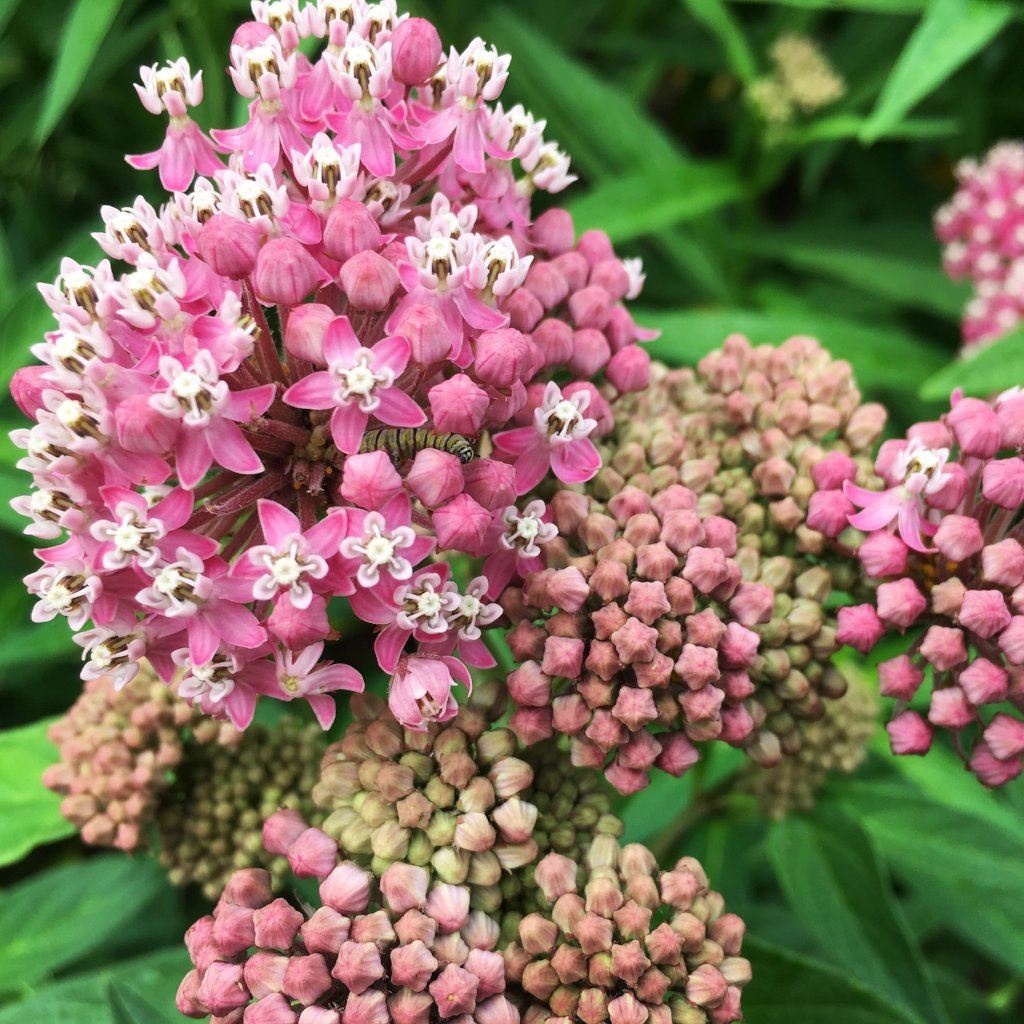
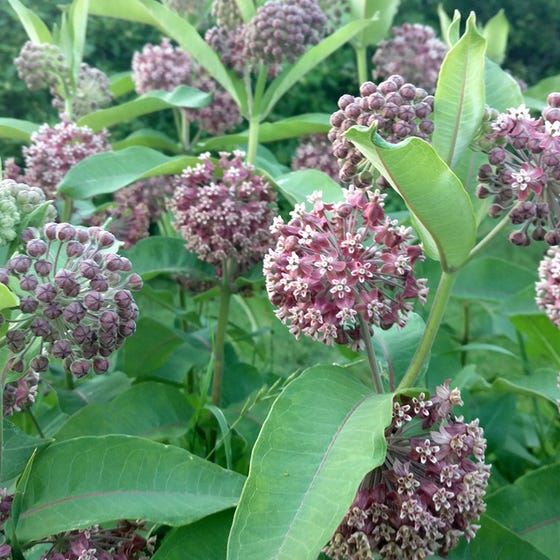 Common Milkweed, Asclepias syriaca, is found widely throughout our region in sandy, clay or even rocky soils of pastures, roadsides and disturbed areas. This milkweed grows in clusters or clones spreading mostly by underground roots or rhizomes. Once established, it will spread and increase easily unless it has some sort of competition from other plants. It might be best to plant it in a field or edge of your lawn or garden where you can keep it in check. Or simply thin it out each year and share the rhizomes with other gardeners! Flowers are purplish pink to white and bloom in large balls of 100+ flowers from May through August attracting a wide variety of pollinators. Leaves are opposite, large and oval shaped. Common Milkweed can grow to over 4 feet tall in the right conditions and although it produces a lot of seeds in its characteristic seed pods, it is easier to propagate from root stock. This is by far the most popular and commonly used milkweed for monarch butterflies and it needs lots of sunshine.
Common Milkweed, Asclepias syriaca, is found widely throughout our region in sandy, clay or even rocky soils of pastures, roadsides and disturbed areas. This milkweed grows in clusters or clones spreading mostly by underground roots or rhizomes. Once established, it will spread and increase easily unless it has some sort of competition from other plants. It might be best to plant it in a field or edge of your lawn or garden where you can keep it in check. Or simply thin it out each year and share the rhizomes with other gardeners! Flowers are purplish pink to white and bloom in large balls of 100+ flowers from May through August attracting a wide variety of pollinators. Leaves are opposite, large and oval shaped. Common Milkweed can grow to over 4 feet tall in the right conditions and although it produces a lot of seeds in its characteristic seed pods, it is easier to propagate from root stock. This is by far the most popular and commonly used milkweed for monarch butterflies and it needs lots of sunshine. Pentas lanceolata)
Pentas lanceolata)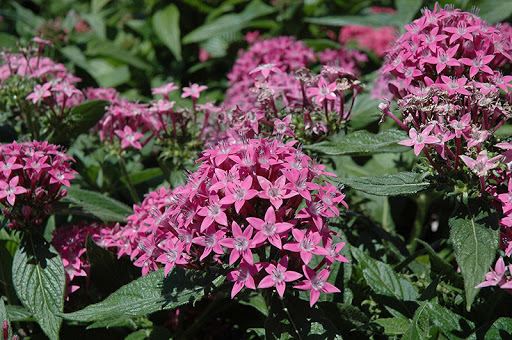 The reason I make sure to include this flower every year is that the butterflies of late summer really love them. Monarch butterflies seem to find them in my garden, although there are not as many now as there used to be. I like to have refreshment for these beauties if they come, and this year my plants are bright red.
The reason I make sure to include this flower every year is that the butterflies of late summer really love them. Monarch butterflies seem to find them in my garden, although there are not as many now as there used to be. I like to have refreshment for these beauties if they come, and this year my plants are bright red.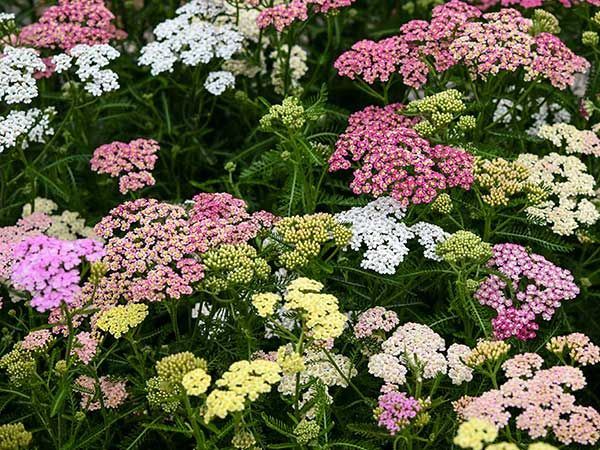
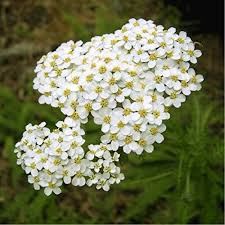 The native yarrow has a white flower, but the stems are not strong and it tends to flop after windstorms and go wild in humid climates. More common are the various cultivars and hybrids, which have stronger stems, larger flowers, and more choices for color, including yellows, pinks, even oranges, and, of course, white. The foliage is fern-like.
The native yarrow has a white flower, but the stems are not strong and it tends to flop after windstorms and go wild in humid climates. More common are the various cultivars and hybrids, which have stronger stems, larger flowers, and more choices for color, including yellows, pinks, even oranges, and, of course, white. The foliage is fern-like.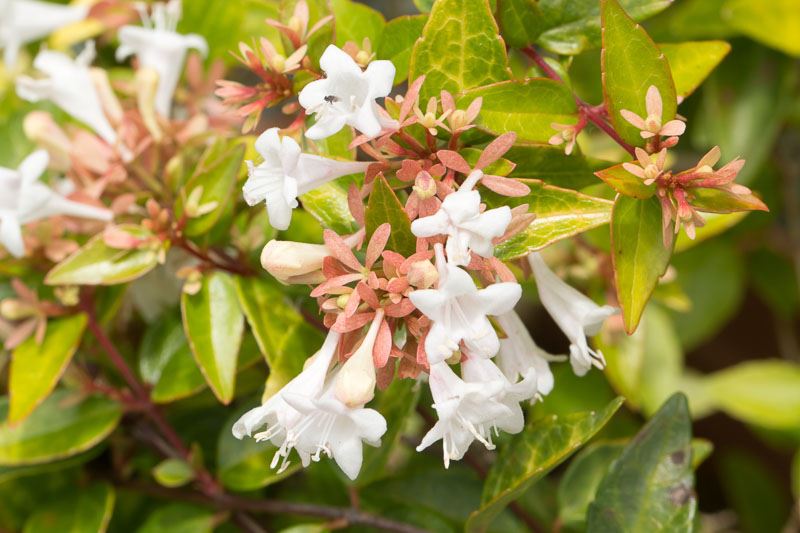
 Glossy abelia is our zone 6-9 standby, however. Leaves are small and shiny. Graceful, arching branches carry clusters of pleasantly scented, tubular pink and white blossoms during all the warm months, and its evergreen leaves provide winter interest. You can plant just one or several for a magnificent hedge. It will grow to 6-10’ height and 6’ width, if you let it. Pruning is iffy - as in, if you insist. I like a loosey- goosey look, so mine grow naturally.
Glossy abelia is our zone 6-9 standby, however. Leaves are small and shiny. Graceful, arching branches carry clusters of pleasantly scented, tubular pink and white blossoms during all the warm months, and its evergreen leaves provide winter interest. You can plant just one or several for a magnificent hedge. It will grow to 6-10’ height and 6’ width, if you let it. Pruning is iffy - as in, if you insist. I like a loosey- goosey look, so mine grow naturally.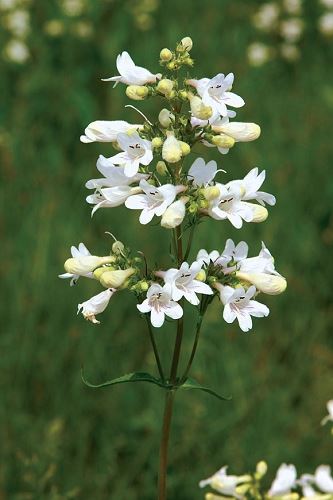
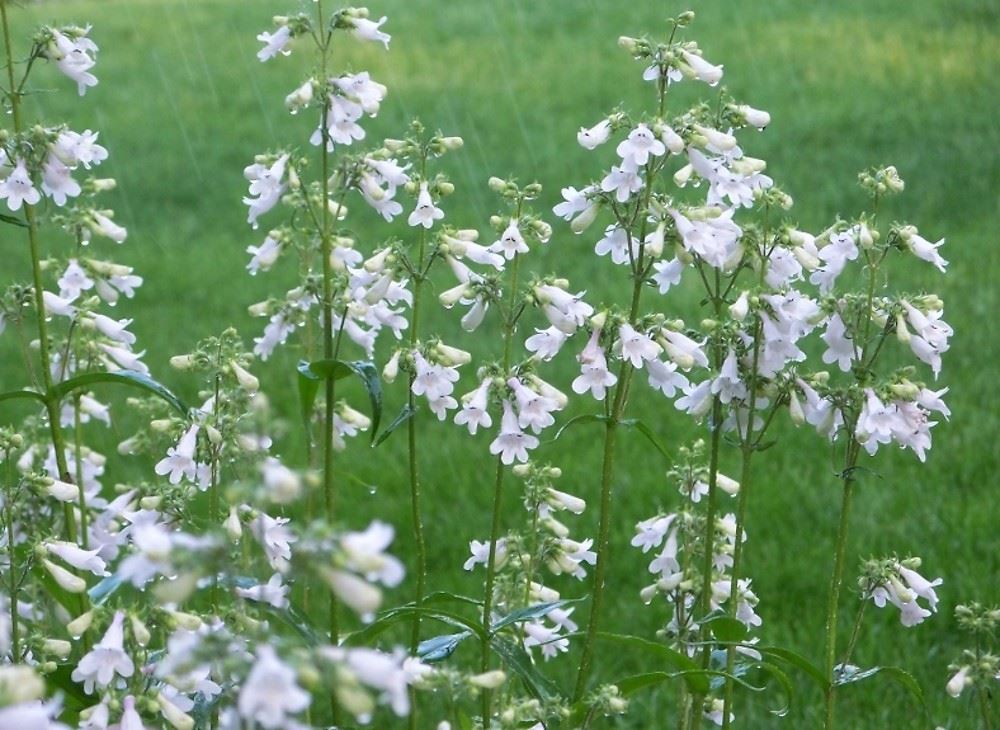 It is a low maintenance plant that likes average, well-drained soil and partial shade. Take note, a poorly drained, wet site can be fatal! My favorite is ‘Husker Red’ that sends up tall spikes of bell-like, tubular white flowers flushed with pink early to mid-summer, similar to foxglove or salvia blooms. In this cultivar the stems, flowers and leaves all have a reddish tint. The foliage makes a stunning contrast to the white blooms and is a showy addition to the garden. Add to this all their pollinator friends and you have a real perennial winner! Penstemon attracts hummingbirds and a wide diversity of butterflies, moths, and bees.
It is a low maintenance plant that likes average, well-drained soil and partial shade. Take note, a poorly drained, wet site can be fatal! My favorite is ‘Husker Red’ that sends up tall spikes of bell-like, tubular white flowers flushed with pink early to mid-summer, similar to foxglove or salvia blooms. In this cultivar the stems, flowers and leaves all have a reddish tint. The foliage makes a stunning contrast to the white blooms and is a showy addition to the garden. Add to this all their pollinator friends and you have a real perennial winner! Penstemon attracts hummingbirds and a wide diversity of butterflies, moths, and bees.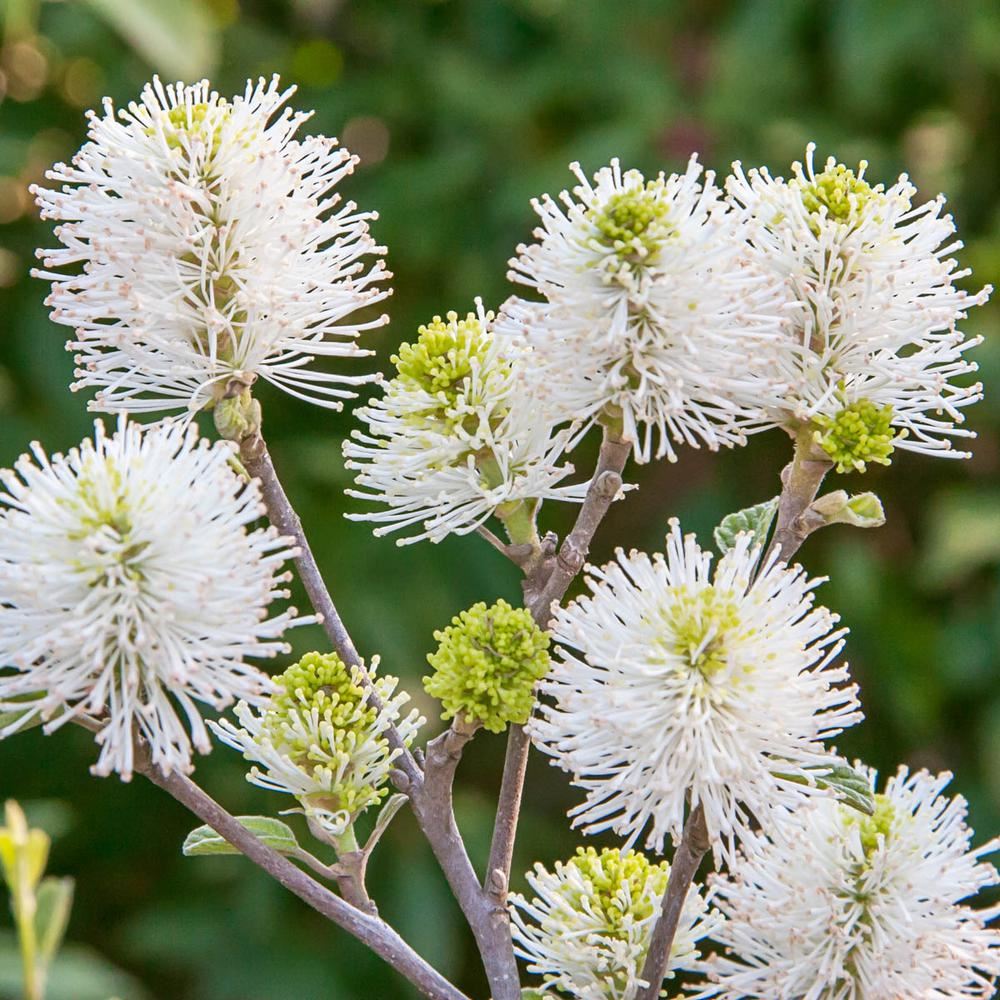
 For flowering and fall colors, full sun is best. But partial shade will still do the trick. In the doldrums of winter their dense, whitish gray branches twine together, each ending in a small pointed bud tip.
For flowering and fall colors, full sun is best. But partial shade will still do the trick. In the doldrums of winter their dense, whitish gray branches twine together, each ending in a small pointed bud tip.
 The main chore associated with berry cane is pruning. There are rules for the blackberries, but only the growers pushing for maximum yield need to be religious about the particulars. After you pick the berries each year, work on cutting the canes that fruited down to the ground. Then, over the winter and into early spring, clean out any dead canes and do some thinning. In each 10 foot section of a row, leave about 5 strong canes, clip them to the top wire to pull them upright, and prune them back to a little above the top of the “T” post (about 4 feet high).
The main chore associated with berry cane is pruning. There are rules for the blackberries, but only the growers pushing for maximum yield need to be religious about the particulars. After you pick the berries each year, work on cutting the canes that fruited down to the ground. Then, over the winter and into early spring, clean out any dead canes and do some thinning. In each 10 foot section of a row, leave about 5 strong canes, clip them to the top wire to pull them upright, and prune them back to a little above the top of the “T” post (about 4 feet high).
 Rabbiteye blueberries are said to be called rabbiteye because the berries turn pink before they go blue, reminiscent of the eye color of a white rabbit. My first experience growing rabbiteyes came after I dug up two root shoots from a neighbor’s bush. Ten years later those two sticks produce several gallons of fruit each year. In fact, I typically tire of picking long before the final berries have ripened.
Rabbiteye blueberries are said to be called rabbiteye because the berries turn pink before they go blue, reminiscent of the eye color of a white rabbit. My first experience growing rabbiteyes came after I dug up two root shoots from a neighbor’s bush. Ten years later those two sticks produce several gallons of fruit each year. In fact, I typically tire of picking long before the final berries have ripened.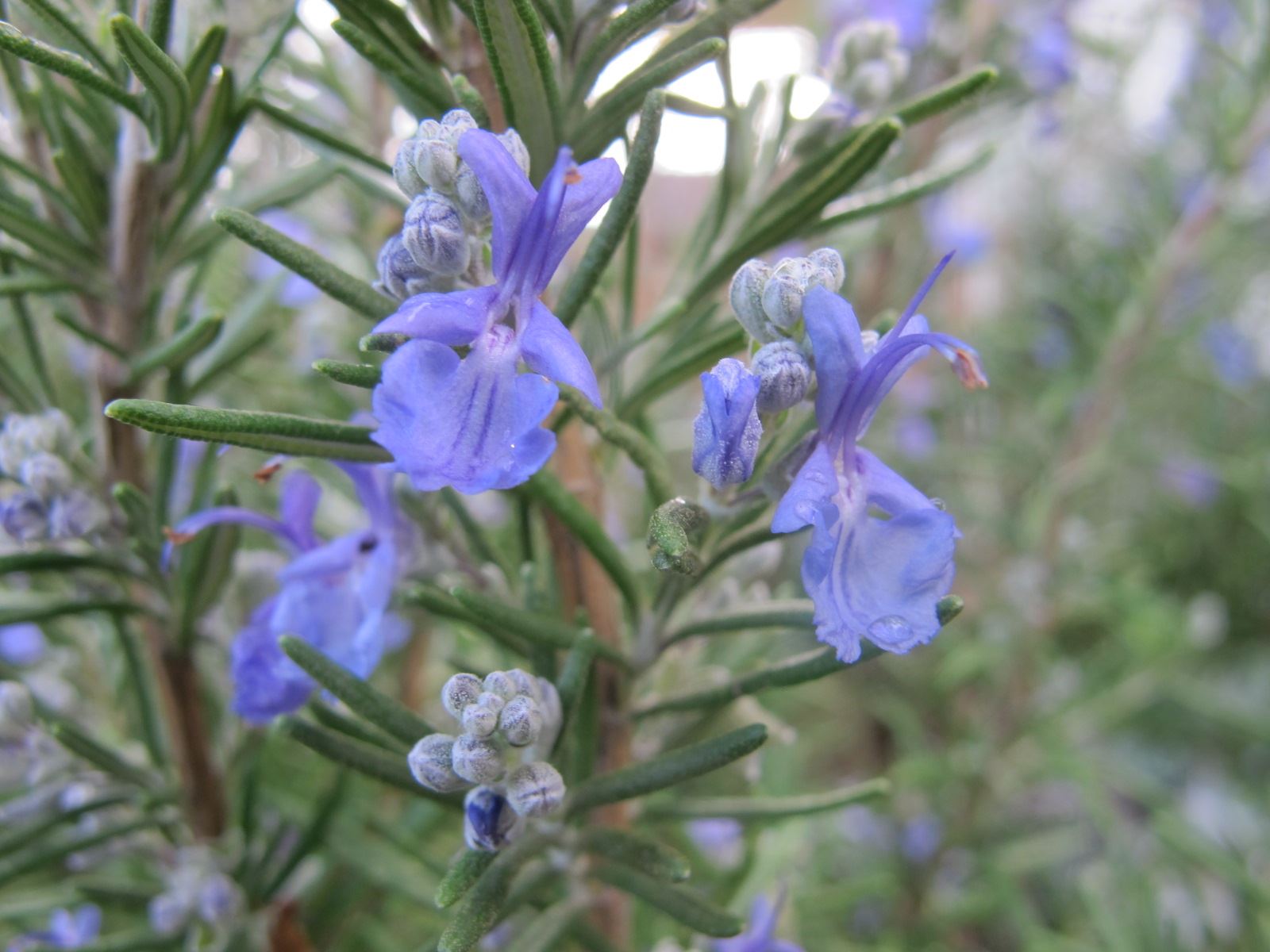
 Rosemary is one of the essential herbs for European cooking and is especially pleasant when it is fresh. Boil some new potatoes till fork tender, put them on an oiled sheet pan and smash them down to about half an inch, sprinkle with minced rosemary leaves, and drizzle with olive oil. Twenty minutes at 450 degrees and you have a savory, crispy potato side dish. Stuff chicken with rosemary stems before roasting. There are many uses for this versatile herb. - by D. Rocco
Rosemary is one of the essential herbs for European cooking and is especially pleasant when it is fresh. Boil some new potatoes till fork tender, put them on an oiled sheet pan and smash them down to about half an inch, sprinkle with minced rosemary leaves, and drizzle with olive oil. Twenty minutes at 450 degrees and you have a savory, crispy potato side dish. Stuff chicken with rosemary stems before roasting. There are many uses for this versatile herb. - by D. Rocco
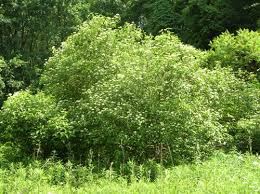 The silky dogwood is also known as swamp dogwood, indicating that it likes medium to wet soil. Later in the year it develops berries, which attract birds. If left untended, it will grow into a thicket, so a little pruning for shape, size, and to keep branches off the ground is warranted. While not as showy in the winter as the red-twig dogwood, this is a better plant for pollinators with a more subdued charm. - by B. Hornyak
The silky dogwood is also known as swamp dogwood, indicating that it likes medium to wet soil. Later in the year it develops berries, which attract birds. If left untended, it will grow into a thicket, so a little pruning for shape, size, and to keep branches off the ground is warranted. While not as showy in the winter as the red-twig dogwood, this is a better plant for pollinators with a more subdued charm. - by B. Hornyak
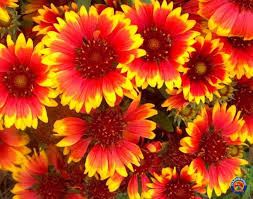 A drought-resistant and hardy member of the Aster family, G. pulchella prefers full sun and adapts to most soil conditions making G. pulchella a low maintenance addition to the summer garden. Not only does G. pulchella provide rich and warm colors to a garden, it also adds textural interest as a result of its fuzzy leaves and stems. Gaillardia attracts bees, birds, and butterflies and works well in flower arrangements. What’s NOT to like about this flower? Indeed, since this annual reseeds readily, I am enlisting Gaillardia to help cover a steep hillside in front of my house. Despite its ability to self-seed freely, Gaillardia is not invasive and is easily kept in check. The flowers may be deadheaded to promote continuous blooming or left on the plant to provide food for birds. - by E. Huffaker
A drought-resistant and hardy member of the Aster family, G. pulchella prefers full sun and adapts to most soil conditions making G. pulchella a low maintenance addition to the summer garden. Not only does G. pulchella provide rich and warm colors to a garden, it also adds textural interest as a result of its fuzzy leaves and stems. Gaillardia attracts bees, birds, and butterflies and works well in flower arrangements. What’s NOT to like about this flower? Indeed, since this annual reseeds readily, I am enlisting Gaillardia to help cover a steep hillside in front of my house. Despite its ability to self-seed freely, Gaillardia is not invasive and is easily kept in check. The flowers may be deadheaded to promote continuous blooming or left on the plant to provide food for birds. - by E. Huffaker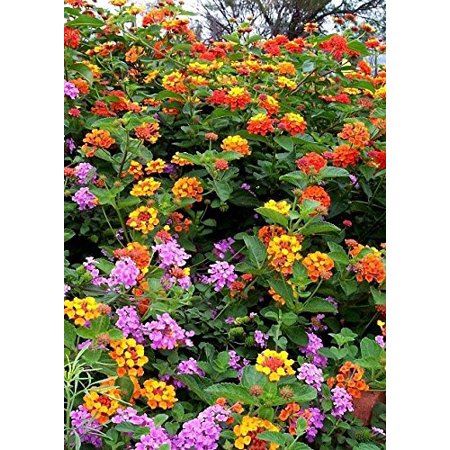
 All cultivars are undemanding, pest free, and low maintenance. Ordinary soil, even East Tennessee red clay, is just fine. Because Lantana likes hot weather, you probably won’t find it at nurseries until late spring, and it doesn’t take off until mid-June. It requires a small to moderate amount of water, adds brilliant color, attracts beautiful pollinators – what more could one ask?
All cultivars are undemanding, pest free, and low maintenance. Ordinary soil, even East Tennessee red clay, is just fine. Because Lantana likes hot weather, you probably won’t find it at nurseries until late spring, and it doesn’t take off until mid-June. It requires a small to moderate amount of water, adds brilliant color, attracts beautiful pollinators – what more could one ask?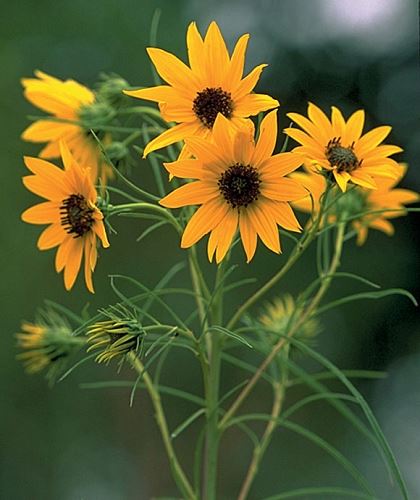
 The willow leaf sunflower is a late blooming perennial that performs well in a wild, native plant garden, sharing the spotlight with ornamental grasses or as an excellent backdrop in a border. Preferring a sunny spot in your garden, it is happiest in moist, well- drained soil but will tolerate some shade and drought. The willow leaf sunflower can grow to a height of 8 to 10 feet tall and spreads by underground rhizomes. One plant can produce 6 to 15 flower heads. Leaves are long and narrow, similar to willow, thus the name. Flowers are cheery golden yellow florets surrounding a brown disk. The plant blooms from late summer well into fall and may last until the first frost. Two popular cultivars include ‘First Light’ which only grows 3 feet tall and blooms in September. ‘Low Down’ tends to be smaller and more compact with smaller leaves and flowers. It’s great in cut flower arrangements.
The willow leaf sunflower is a late blooming perennial that performs well in a wild, native plant garden, sharing the spotlight with ornamental grasses or as an excellent backdrop in a border. Preferring a sunny spot in your garden, it is happiest in moist, well- drained soil but will tolerate some shade and drought. The willow leaf sunflower can grow to a height of 8 to 10 feet tall and spreads by underground rhizomes. One plant can produce 6 to 15 flower heads. Leaves are long and narrow, similar to willow, thus the name. Flowers are cheery golden yellow florets surrounding a brown disk. The plant blooms from late summer well into fall and may last until the first frost. Two popular cultivars include ‘First Light’ which only grows 3 feet tall and blooms in September. ‘Low Down’ tends to be smaller and more compact with smaller leaves and flowers. It’s great in cut flower arrangements.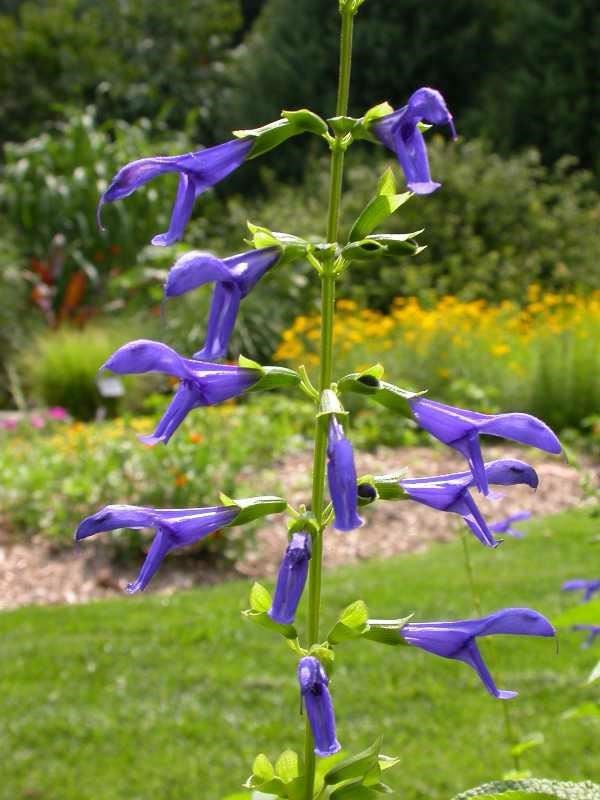
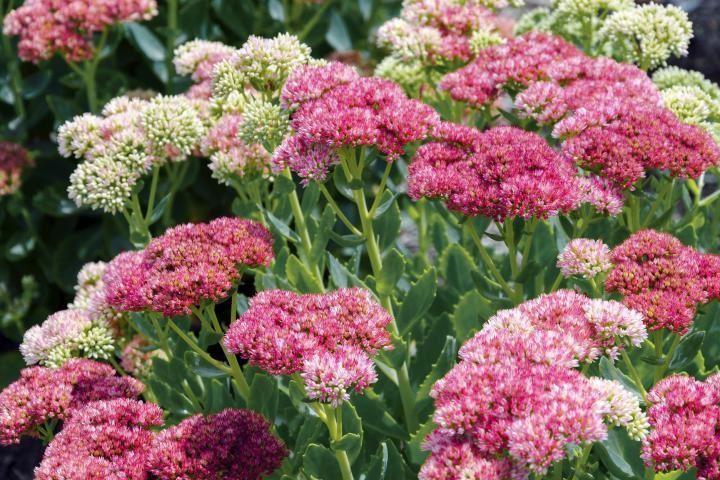
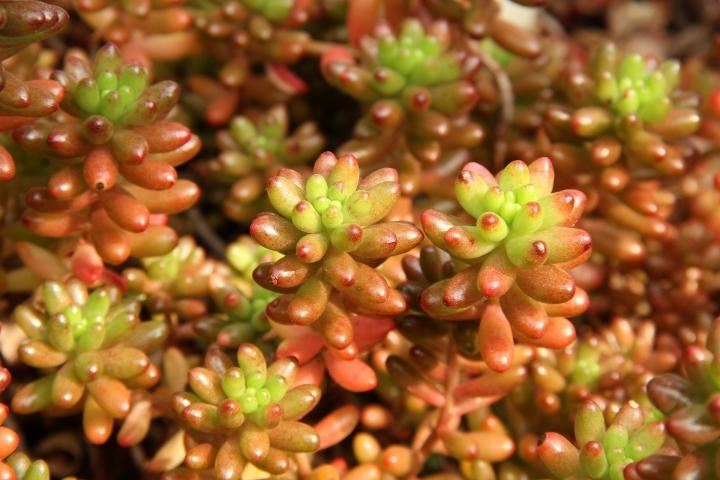 A popular hybrid is Hylotelephium 'Herbstfreude' Autumn Joy. I believe my garden has Hylotelephium 'Pure Joy' based on its light pink flowers and the fact that it starts to bloom in mid to late June. Mine look so pretty paired with pink begonias.
A popular hybrid is Hylotelephium 'Herbstfreude' Autumn Joy. I believe my garden has Hylotelephium 'Pure Joy' based on its light pink flowers and the fact that it starts to bloom in mid to late June. Mine look so pretty paired with pink begonias.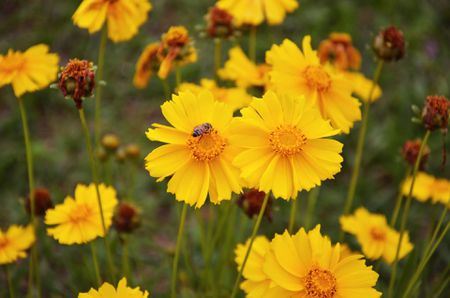
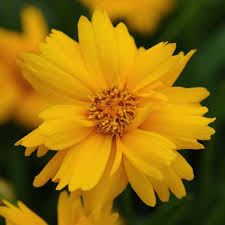 Seasonal interest: Coreopsis has interest spring through fall with attractive foliage, color and texture. It also has winter interest when the dried foliage turns cinnamon brown and creates a fine-textured effect. Of course, the real spotlight comes from the cheerful blooms that fill the garden with color all summer and autumn long.
Seasonal interest: Coreopsis has interest spring through fall with attractive foliage, color and texture. It also has winter interest when the dried foliage turns cinnamon brown and creates a fine-textured effect. Of course, the real spotlight comes from the cheerful blooms that fill the garden with color all summer and autumn long.
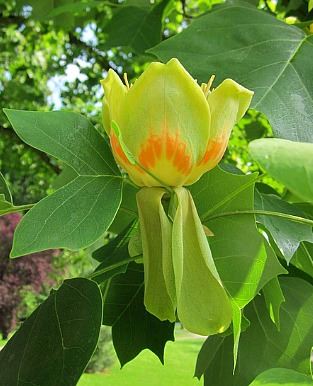 This native tree prefers rich, well-drained, slightly acidic soil and full sunlight. Its wind- pollinated, winged seeds are a food source for wildlife especially song birds and small mammals. Deer like the young shoots and leaves. This state tree of Tennessee drops its yellow foliage early in the fall. Because of the strength and straight growth of this softer hardwood, this tree was heavily logged in the Great Smoky Mountains National Park. There are historic photos of trees up to 30’ in diameter! -by J. Davidson
This native tree prefers rich, well-drained, slightly acidic soil and full sunlight. Its wind- pollinated, winged seeds are a food source for wildlife especially song birds and small mammals. Deer like the young shoots and leaves. This state tree of Tennessee drops its yellow foliage early in the fall. Because of the strength and straight growth of this softer hardwood, this tree was heavily logged in the Great Smoky Mountains National Park. There are historic photos of trees up to 30’ in diameter! -by J. Davidson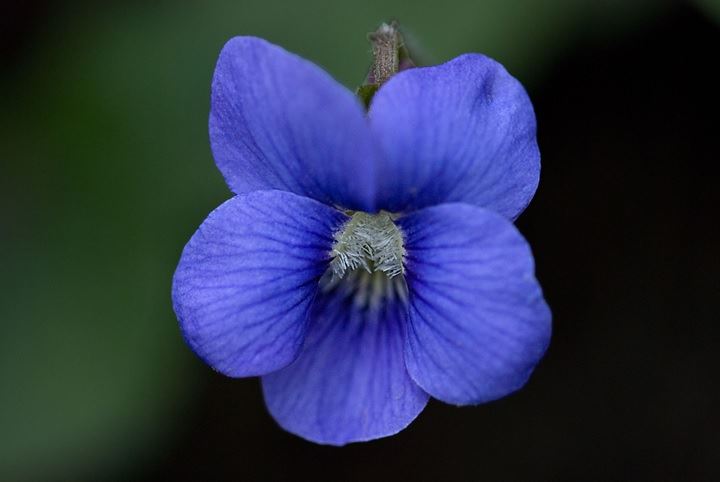
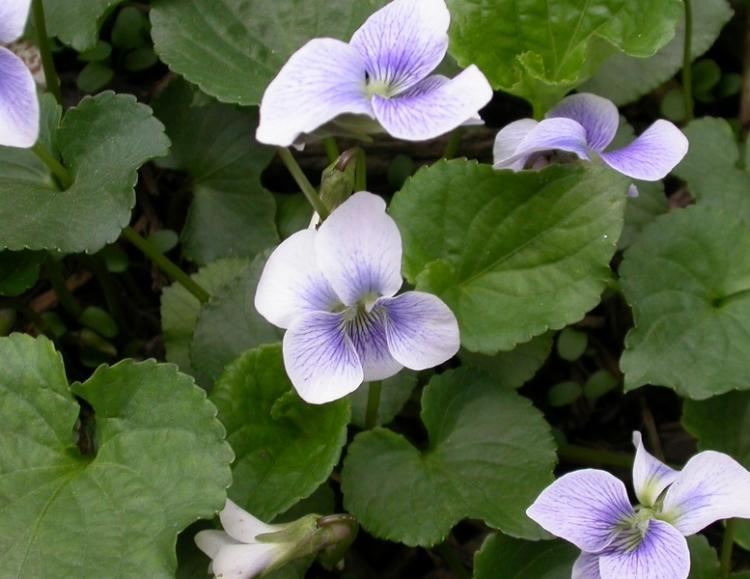 The main reason I grow violets is for the several Fritillaries butterflies – Variegated, Diana, Great Spangled, Aphrodite, and Meadow Fritillaries – which use them as host plants. The caterpillars hatch in the fall and overwinter under the fallen leaves without feeding. If the tiny newly hatched caterpillars survive winter, they locate the nearby violets and eat the leaves before changing into a chrysalis. Most Fritillaries in Tennessee don’t fly off as butterflies until June. There are often 3 or 4 life cycles between spring and fall, and the last cycle of caterpillars must again survive over winter without food. You’ll want to have a LOT of this plant so you’ll have plenty for the butterflies and still have plenty left for yourself to enjoy. Luckily, with this plant it will be easy. - by T. Graham
The main reason I grow violets is for the several Fritillaries butterflies – Variegated, Diana, Great Spangled, Aphrodite, and Meadow Fritillaries – which use them as host plants. The caterpillars hatch in the fall and overwinter under the fallen leaves without feeding. If the tiny newly hatched caterpillars survive winter, they locate the nearby violets and eat the leaves before changing into a chrysalis. Most Fritillaries in Tennessee don’t fly off as butterflies until June. There are often 3 or 4 life cycles between spring and fall, and the last cycle of caterpillars must again survive over winter without food. You’ll want to have a LOT of this plant so you’ll have plenty for the butterflies and still have plenty left for yourself to enjoy. Luckily, with this plant it will be easy. - by T. Graham
 The 8” to 12” flowers will bloom in late spring and continue sporadically throughout the summer. The blooms are attractive to many pollinators as a valuable source of nectar and pollen. The trees provide shelter for the birds who will feed on the cone-like seed pods. Other wildlife such as squirrels, quail, and wild turkeys are also attracted to the magnolia shelter and food.
The 8” to 12” flowers will bloom in late spring and continue sporadically throughout the summer. The blooms are attractive to many pollinators as a valuable source of nectar and pollen. The trees provide shelter for the birds who will feed on the cone-like seed pods. Other wildlife such as squirrels, quail, and wild turkeys are also attracted to the magnolia shelter and food.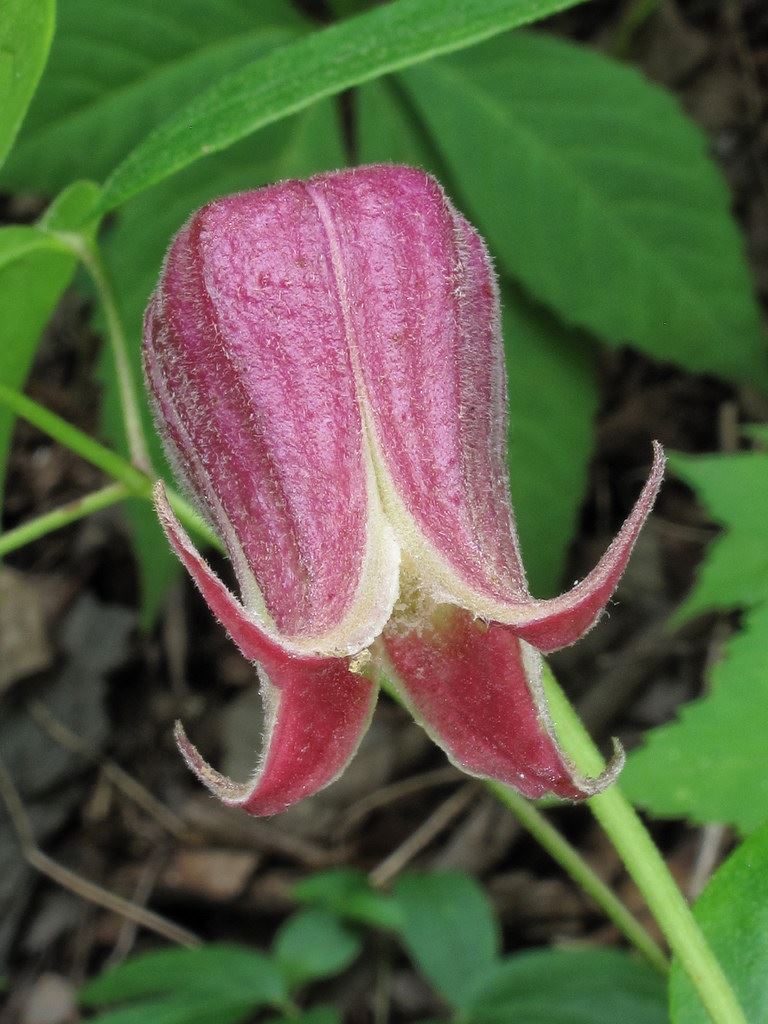
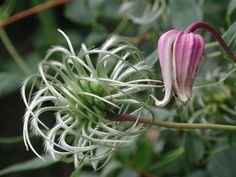 Clematis viorna is adaptable to many light and soil conditions. To reduce stress in full sun, “shade” its bottom and “sun” its leaves! Plant in well-drained soil, as this plant likes moisture but doesn’t like sitting in a saturated soil. My vine is draped on a hanger against our lamppost in a raised bed with mid-day to late afternoon sun. The base of the plant is protected from the heat of the day by a dense planting of ditch lilies, daylilies and azaleas (not to mention the “volunteer” Virginia creeper that showed up this year!) As East Tennessee is not exempt from periodic prolonged high temperatures and drought, I do provide supplemental water as needed.
Clematis viorna is adaptable to many light and soil conditions. To reduce stress in full sun, “shade” its bottom and “sun” its leaves! Plant in well-drained soil, as this plant likes moisture but doesn’t like sitting in a saturated soil. My vine is draped on a hanger against our lamppost in a raised bed with mid-day to late afternoon sun. The base of the plant is protected from the heat of the day by a dense planting of ditch lilies, daylilies and azaleas (not to mention the “volunteer” Virginia creeper that showed up this year!) As East Tennessee is not exempt from periodic prolonged high temperatures and drought, I do provide supplemental water as needed.
 bright that the twigs are hardly visible! The attractive bright red fruit of winterberry is eaten by small mammals and several species of birds. My winterberries typically attract wood thrushes and bluebirds so I have to be quick to cut what I need for wreaths!
bright that the twigs are hardly visible! The attractive bright red fruit of winterberry is eaten by small mammals and several species of birds. My winterberries typically attract wood thrushes and bluebirds so I have to be quick to cut what I need for wreaths!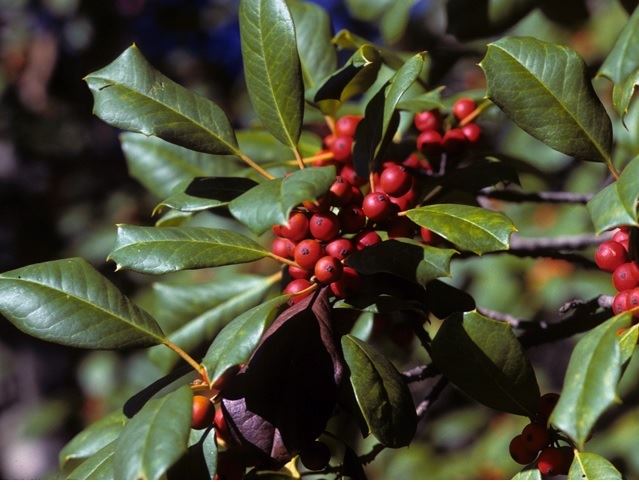
 Both male and female hollies provide blooms for pollinators but only the female produces berries. Trees of both sexes must be located within the same general area to ensure fruit production on the female holly. I’ve had a female holly for
Both male and female hollies provide blooms for pollinators but only the female produces berries. Trees of both sexes must be located within the same general area to ensure fruit production on the female holly. I’ve had a female holly for 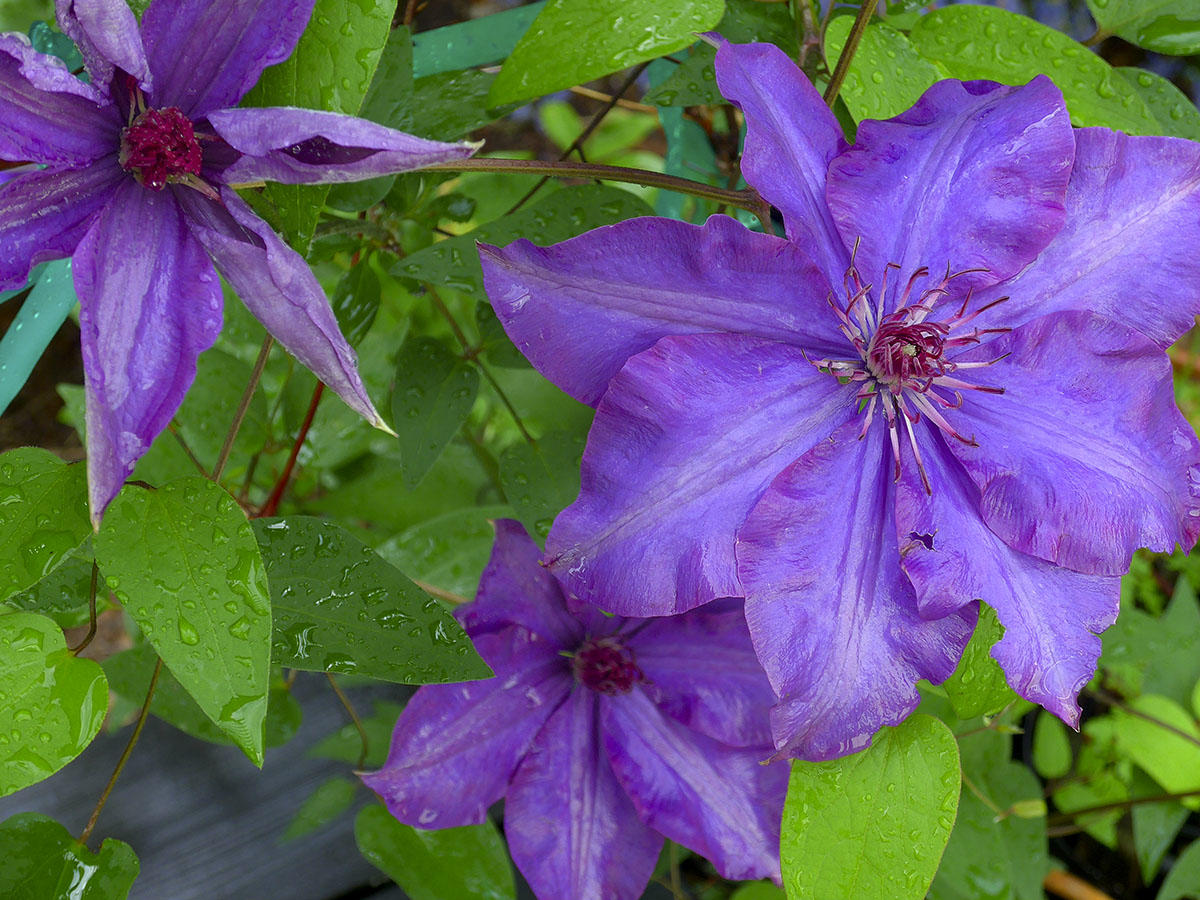
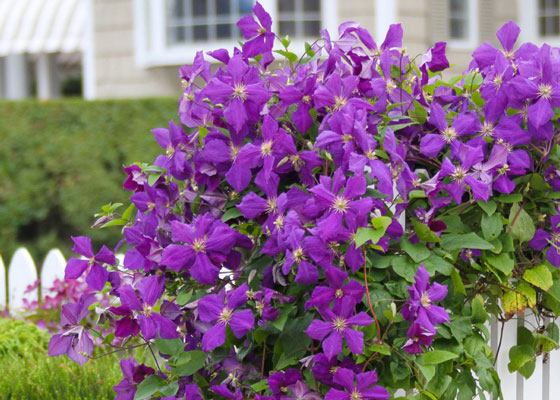 Having declared my method a failure, I made a plan informed by research and expert advice. There are about 300 species of clematis. All fall into one of three categories based on when they bloom: Group 1 blooms in spring; Group 2 blooms in early summer and then sometimes blooms again, and Group 3 blooms in late summer. Refer to https://empressofdirt.net, Clematis 101 Easy Care Guide for an excellent explanation and reference chart of the three types.
Having declared my method a failure, I made a plan informed by research and expert advice. There are about 300 species of clematis. All fall into one of three categories based on when they bloom: Group 1 blooms in spring; Group 2 blooms in early summer and then sometimes blooms again, and Group 3 blooms in late summer. Refer to https://empressofdirt.net, Clematis 101 Easy Care Guide for an excellent explanation and reference chart of the three types.
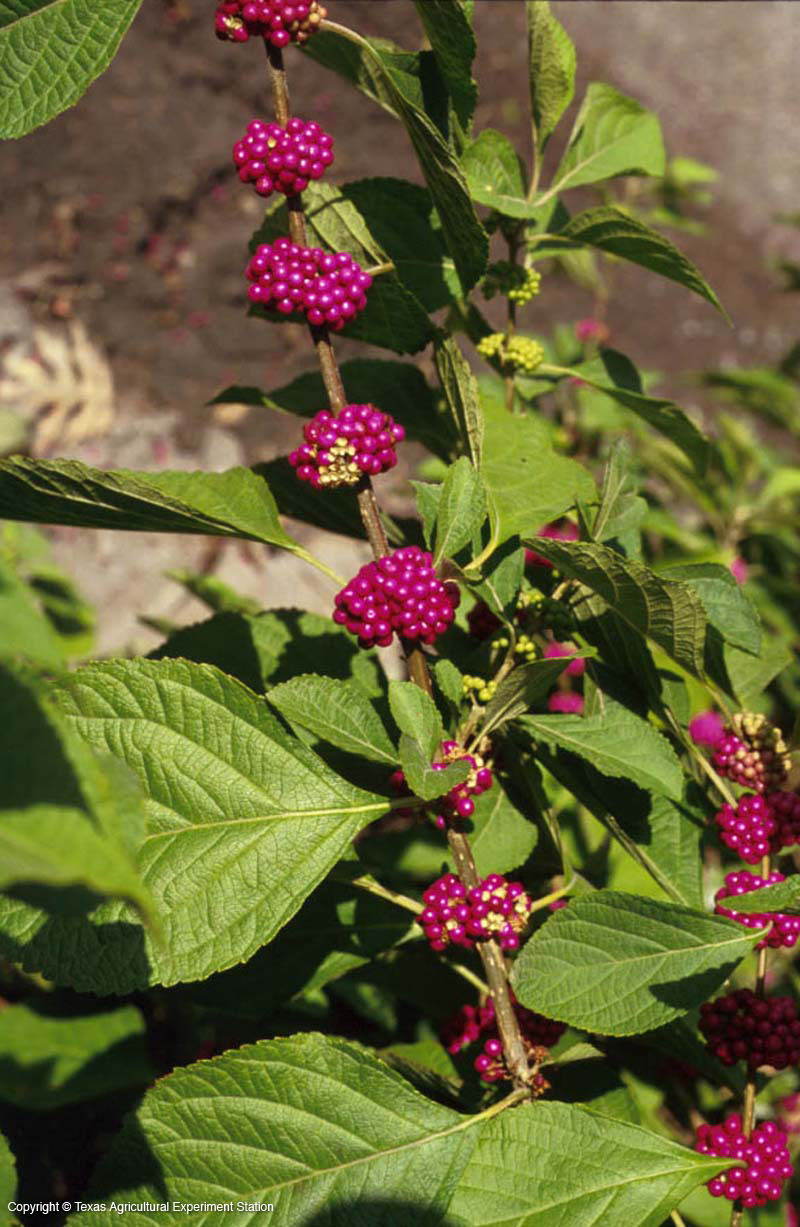 This plant is a native deciduous shrub of the Southeast United States. Native Americans used the dried roots and leaves for tea to combat illnesses such as rheumatism, fever and even malaria! Pioneers used the green leaves as a bug repellant for their horses and mules. They even rubbed it on themselves to repel biting bugs. It is food to over forty species of birds as well as raccoon, fox, opossum and white- tailed deer. Beautyberry has no real value as a pollinator as the flowers do not produce much nectar. The shrub is rather nondescript during the summer with oval, serrated leaves about 6-9 inches long and gray bark on old wood. It grows to 6 feet tall and 5 feet wide, but can be cut back to twelve inches in the winter to keep it 3’ to 4’ in height.
This plant is a native deciduous shrub of the Southeast United States. Native Americans used the dried roots and leaves for tea to combat illnesses such as rheumatism, fever and even malaria! Pioneers used the green leaves as a bug repellant for their horses and mules. They even rubbed it on themselves to repel biting bugs. It is food to over forty species of birds as well as raccoon, fox, opossum and white- tailed deer. Beautyberry has no real value as a pollinator as the flowers do not produce much nectar. The shrub is rather nondescript during the summer with oval, serrated leaves about 6-9 inches long and gray bark on old wood. It grows to 6 feet tall and 5 feet wide, but can be cut back to twelve inches in the winter to keep it 3’ to 4’ in height. Milkweed (Asclepias spp.)
Milkweed (Asclepias spp.)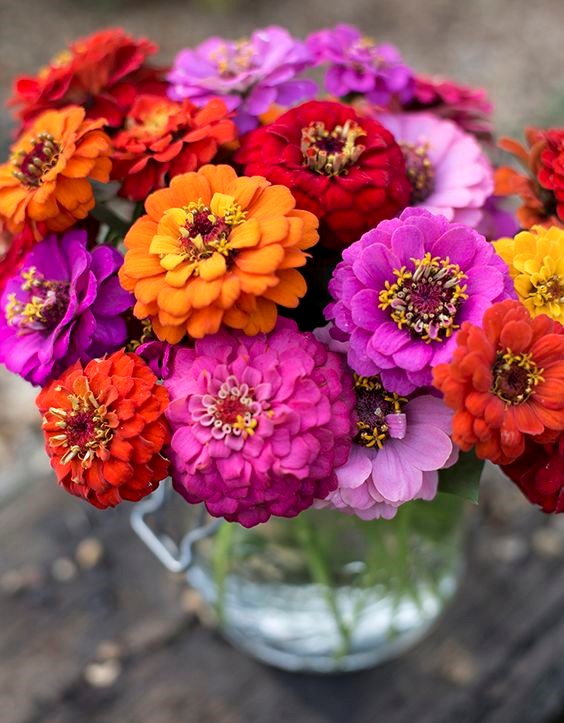 Zinnia (Zinnia elegans)
Zinnia (Zinnia elegans)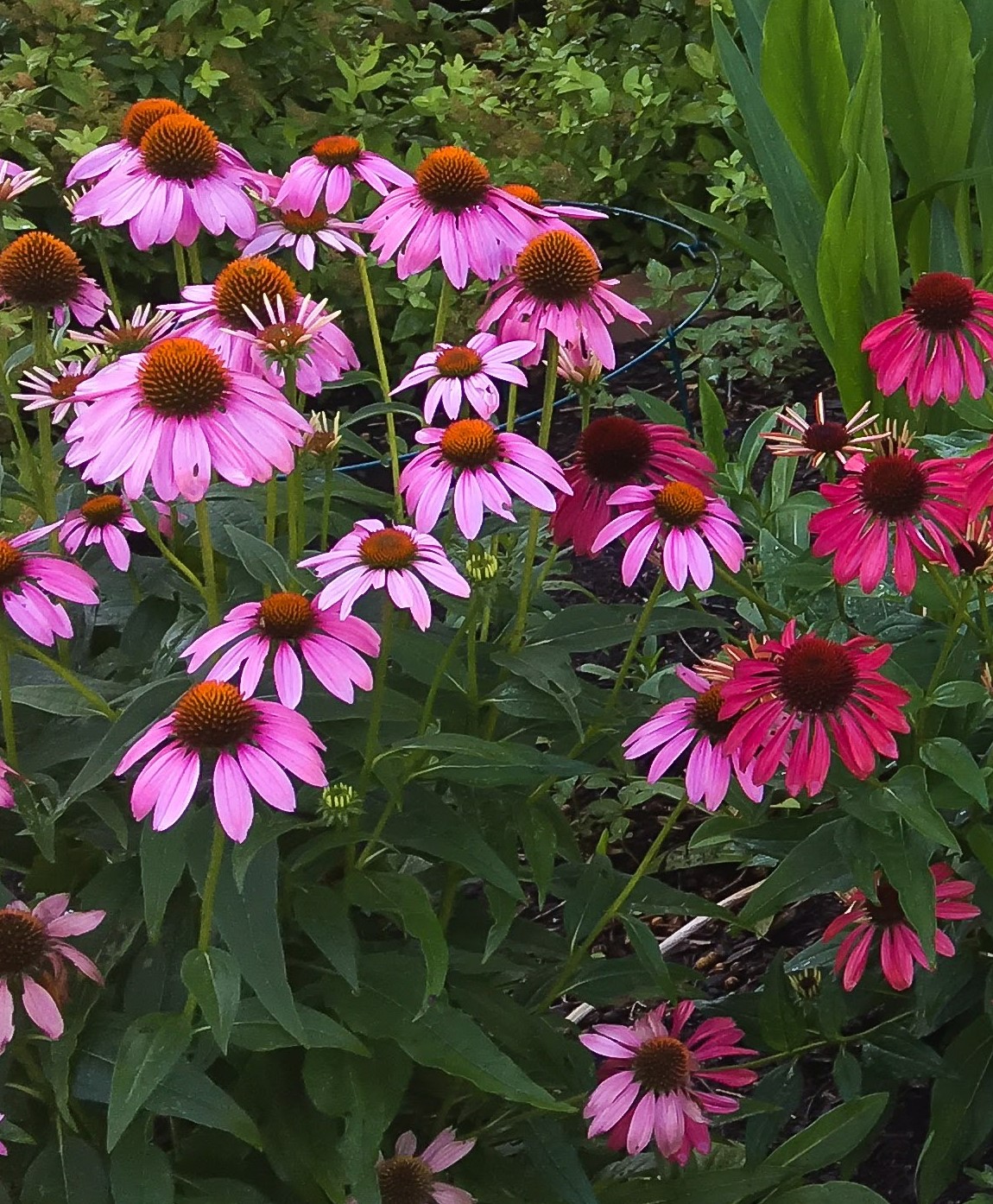 Coneflower, Purple (Echinacea purpurea)
Coneflower, Purple (Echinacea purpurea) Bleeding Heart, Wild or Fringed (Dicentra eximia)
Bleeding Heart, Wild or Fringed (Dicentra eximia)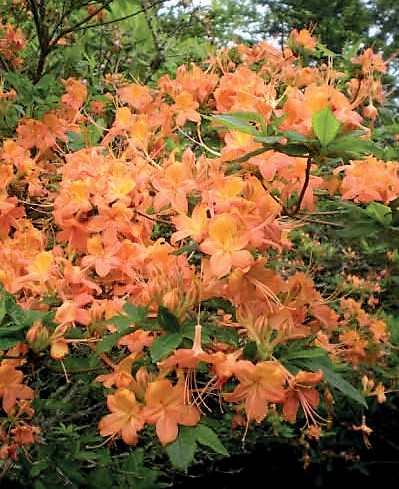 Azalea, flame (Rhododendron calendulaceum)
Azalea, flame (Rhododendron calendulaceum)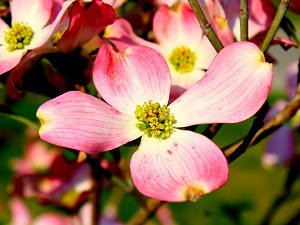 Dogwood (Cornus florida)
Dogwood (Cornus florida)